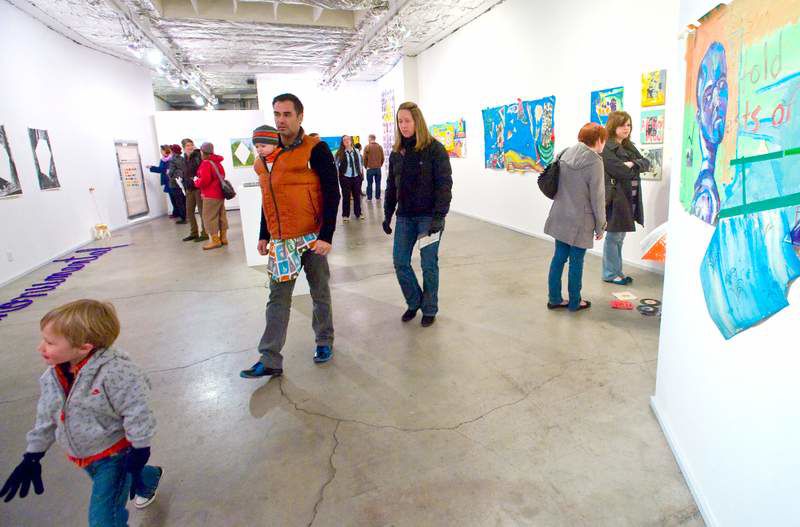Portland celebrates First Thursday’s 25th
Published 5:00 am Sunday, October 9, 2011

- Art lovers take in the art installation at Blackfish Gallery during the First Thursday art walk in Portland's Pearl District in 2009. The Portland Art Dealers Association celebrated First Thursday's 25th anniversary last week.
PORTLAND — The Portland Art Dealers Association will celebrated First Thursday’s 25th anniversary last week with added fanfare amid the usual buzz of wine-sipping art gazers, street performers and carefully coifed social opportunists.
But the celebration wasn’t merely about First Thursday. It was about the creation of the Pearl District and the evolution of the Portland art scene, from Northeast Alberta Avenue to Southwest Alder Street. It honored an event that started with three gallery owners and is now sponsored by an association of 12 galleries.
“Portland now has a higher number of galleries than most other cities of its size in the U.S.,” said Bob Kochs, owner of the Augen Gallery and one of First Thursday’s founders. “In a town, I might add, that’s not the most robust economy in the U.S. right now.”
In 1986, Elizabeth Leach was an ambitious 24-year-old with a small gallery on Southwest Pine Street. She was among a handful of art dealers struggling to generate a thriving visual arts scene in Portland. The city’s biggest art purveyor, The Fountain Gallery, had just closed. Owners of smaller galleries on Portland’s west side worried business would stagnate.
Fueled by a desire to inject a dose of pride into Portland’s arts scene, Leach and gallery owners Kochs and William Jamison devised a plan: Mimicking an event generating buzz in Seattle, the trio planned to keep their galleries open late one night a month for after-hours public viewings, refreshments and conversations. They would call it “First Thursday.”
Leach, Kochs and Jamison hoped First Thursday would allow serious art buyers to circulate all the galleries’ exhibitions on one night, while removing the intimidation factor for first-time visitors.
Within a couple of years, First Thursday crowds at the seven participating galleries were spilling out the doors. Since then, most of the galleries (there are now 12) have moved to the Pearl, where young couples browse Stephen Hayes paintings and M.K. Guth installments. In the height of summer, crowds reach into the 800s at participating galleries and the Urban Art Network’s outdoor gallery that lines Northwest 13th Avenue from Hoyt to Kearney.
Before the galleries came to the Pearl District, “it was pretty dormant,” said developer Al Solheim, who owns several properties in the Pearl.
Quartersaw Gallery was the first to open in the mid-1980s, amid a run-down cluster of warehouses, auto shops and industrial operations. Others followed a few years later, drawn by cheap rent. Artists began opening studios and, before long, the area established a reputation as Portland’s visual arts district.
High-rent residential developments arrived in the mid-1990s, and developers latched onto the glittery new name and the new demographic of well-dressed young professionals. Shops and restaurants followed, transforming a neighborhood that only a decade earlier harbored more mechanics than art enthusiasts.
“The arts had a big role to play,” Solheim said. “They helped create the neighborhood down here.”
Today, First Thursday’s impact reaches beyond the borders of the Pearl. Copycat events have cropped up as other districts attempt to duplicate First Thursday’s economic and social benefits: There’s Second Thursday on Mississippi Avenue, while the Kenton neighborhood claims Third Thursday and Alberta Avenue’s infamously rowdy Last Thursday rounds out the month.
First Thursday’s evolving identity is not necessarily a bad thing, Leach said. The event is no longer all about the art, she admitted, but it continues to strengthen the community — a mission the galleries have always strove to fulfill.
“It does border on entertainment rather than education, but it creates an opportunity if people want to talk,” she said. “It’s still a big citywide celebration of the arts and our culture here.”






